- Bank Holiday
- New In
-
Dining
-
Dining Table Sets
 Dining Set Builder
Dining Set Builder
 Dining Table and Chairs
Dining Table and Chairs
 Dining Table and 4 Chairs
Dining Table and 4 Chairs
 Dining Table and 6 Chairs
Dining Table and 6 Chairs
 Dining Table and 8 Chairs
Dining Table and 8 Chairs
 Dining Table and 10 Chairs
Dining Table and 10 Chairs
 Dining Table with Benches
Dining Table with Benches
 Painted Dining Table and Chairs
Painted Dining Table and Chairs
 Ceramic Dining Table and Chairs
Ceramic Dining Table and Chairs
 Round Dining Table and Chairs
View All
Dining Tables
Round Dining Table and Chairs
View All
Dining Tables 4 Seater Dining Tables
4 Seater Dining Tables
 6 Seater Dining Tables
6 Seater Dining Tables
 8 Seater Dining Tables
8 Seater Dining Tables
 10 Seater Dining Tables
10 Seater Dining Tables
 Extendable Dining Tables
Extendable Dining Tables
 Round Dining Tables
View All
Dining Room Furniture
Round Dining Tables
View All
Dining Room Furniture Sideboards
Sideboards
 Dressers
Dressers
 Larders
Larders
 Display Cabinets
Display Cabinets
 Painted Dining Room Furniture
Painted Dining Room Furniture
 Console Tables
Console Tables
 Side Tables
Side Tables
 Home Accessories
Home Accessories
 Furniture Wax and Care Kits
View All
Furniture Wax and Care Kits
View All
-
- Living
- Sofas
-
Bedroom
-
Bedroom Furniture
 Bedside Tables
Bedside Tables
 Blanket Boxes
Blanket Boxes
 Chest of Drawers
Chest of Drawers
 Desks
Desks
 Dressing Tables
Dressing Tables
 Tallboys
Tallboys
 Wardrobes
View All
Mattresses
Wardrobes
View All
Mattresses All Mattresses
All Mattresses
 Single Mattresses
Single Mattresses
 Double Mattresses
Double Mattresses
 King-Size Mattresses
King-Size Mattresses
 Super King-Size Mattresses
Super King-Size Mattresses
 Pillows
Pillows
 Harrison Spinks Mattresses
Harrison Spinks Mattresses
 OFL Mattresses
OFL Mattresses
 Relyon Mattresses
Relyon Mattresses
 Sealy Mattresses
View All
Sealy Mattresses
View All
-
-
Ranges
-
Accessories
-
Offers
- Clearance
Long Narrow Living Room Ideas
Inspiration Station - Living Room
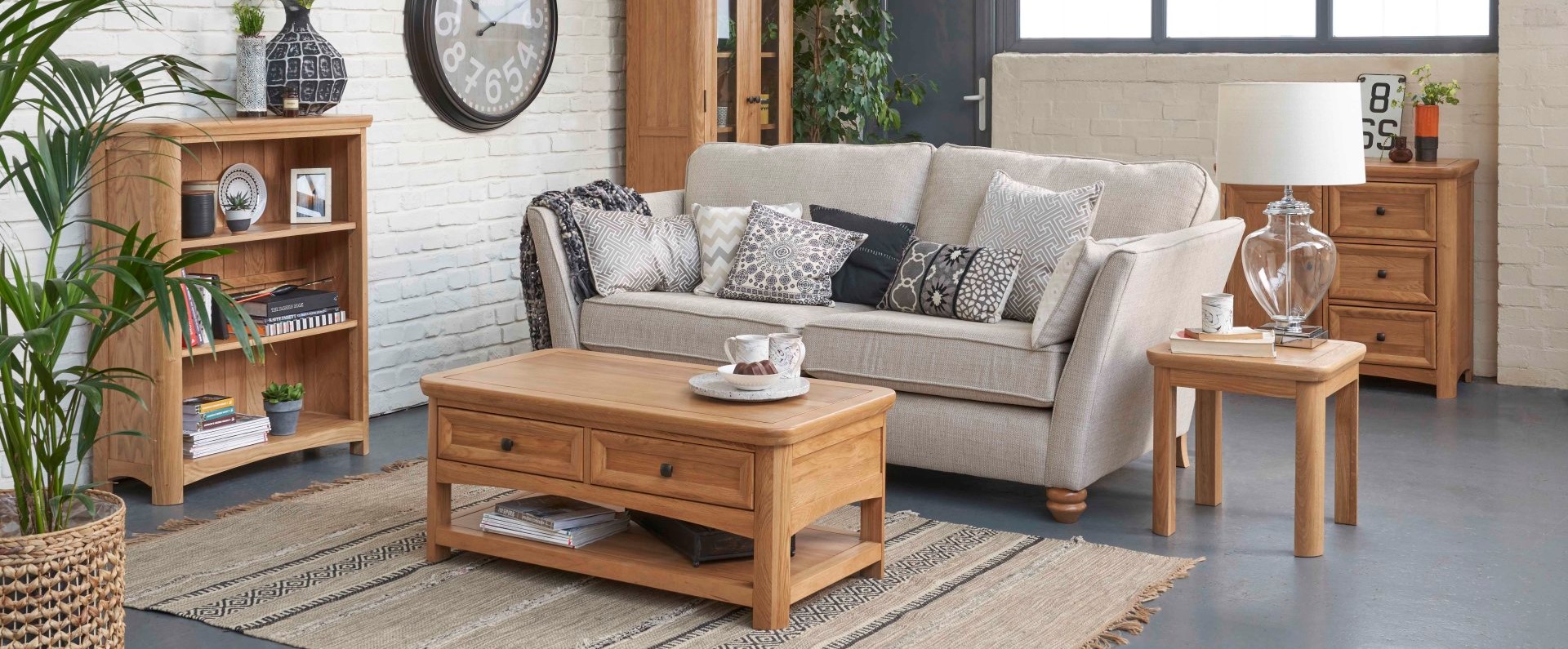
Long Narrow Living Room Ideas
Decorating a long narrow living room can be a challenge. Yet with some simple tricks, you can transform the space into the perfect, relaxing living room for your home.
When it comes to long, narrow living room layout and design ideas, you actually have more options than you think! We run down our top tips for making the most of a long living room:
What can I do with a long narrow living room?
Open plan long narrow living room ideas
How do you zone a living room?
How do you make a narrow living room look wider?

What can I do with a long narrow living room?
When it comes to designing a long narrow living room, it’s all about making the most of the space that you have available.
- Maximise the vertical space on offer. Use tall units, and focus on accessories that elongate the height of the space, such as wall art and floor lamps.
- Creating a pathway through the space can be a great way to lay out your furniture. Whether a pseudo-corridor with a straight pathway, or a sweeping pathway through furniture, this can help to build a real feel to the room.
- Make the most of the room’s length and zone up the space. Create different pockets of activity, whether that’s a home office space, a dining area, or a play area for the kids.
- If you’ve got a really large space, why not combine it into another room? Make it a living-dining room, or even opt for a kitchen-dining-living room combo!

Open plan long narrow living room ideas
If you like the open plan living style, why not transform your long, narrow living room into a multifunctional space? Great for entertaining, bringing the family together, and creating a great flow from your front to your back door, open plan living carries many benefits for the home.
How do you decorate a long narrow living room dining room combo?
When designing an open plan living and dining space, you can either opt for a fully open plan, or ‘broken’ plan room. It depends on how you want to use the space! With broken plan living, use physical partitions such as shelving, storage, or furniture to separate the dining and living spaces.
If a fully open plan space is what you’re looking for, you’ll want to design both halves of the room to work cohesively. Keep both dining and living spaces open to each other, with no barriers.

Long narrow kitchen/ living room ideas
You can apply the same tactic when looking to combine a kitchen and living room. Separate the areas with a kitchen island as a partition - you could even add bar stools here to create a dining space too. Alternatively keep it open, with a sofa facing the kitchen counter tops for the ultimate sociable living space.
Whether you choose an open or broken plan space, it’s important to zone the areas to differentiate them, yet keep a consistent colour palette or accent colours to create visual harmony across the room.
How do you zone a living room?
- Use rugs
Rugs are a great way to differentiate living spaces in an open plan room. They allow you to change up the flooring without forking out for a new carpet. Use different textures to create various feels across the room - you might opt for a soft and cosy wool rug under your sofa seating area for example, whilst keeping the dining area hardwood floor.

-
Colour
Another simple way to demarcate areas is with colour. Opt for a dark and cosy statement wall in your living area and paint the dining space a complementary softer shade, for example. You can get creative and choose different, bolder colours to zone areas, just ensure that you keep a similar palette or at least an accent colour running through so that you don’t create too much of a jarring contrast. -
Embrace different lighting
We all know that lighting is a transformative interior design tool, and zoning a room is no exception to this. Illuminating a space in different ways can help to create different pockets of activity.Pendant lighting over a dining table works beautifully for example, and creates a real statement zone if hanging low from the ceiling. In the same room, however, it’s likely that you’d want to choose cosier lighting for a living space, with table and floor lamps. Meanwhile, task lighting is often the best option for a kitchen.
-
Use furniture as a partition
If you want to separate areas more visibly, a ‘broken’ plan option may work better for you. Use furniture in the middle of the room to create partitions between spaces. You could opt for a ‘wall’ of tall units such as display cabinets, dressers or bookcases, or something shorter such as a sideboard or console table.If breaking up a living room and dining room, why not use a corner sofa? You can always place furniture back to back too. Try placing a sideboard at the back of a sofa for the ultimate use of space.

-
Open shelving
If solid furniture is too heavy a look for you, opt for pieces that you can see through such as open shelving. Fill with beautiful accessories to complete the look.You could even use plants or a soft curtain to create a barrier, particularly if you’re working with a small room with limited floor space for more furniture.
Where should you put your TV in a long narrow sitting room?
When it comes to the placement of your TV in a long narrow sitting room, it’s no different from any other shaped room! You’ll want to make sure that it’s mounted or standing at eye level (around 4 ft/ 1.2m from the ground), to avoid straining your eyes or neck.
The exact placement of it will depend on what you want your focal point to be. If the TV is the centre of activity in your living room, you’ll probably want it to be the first thing you see when you open the living room door. Pop it in the middle of the wall opposite the door, with your sofa centrally aligned to it.
If it’s not the focus however, it’s likely you’ll want it tucked away somewhere, so that you can let other furniture take centre stage. You could always place it in the corner with a corner TV unit.

Narrow living room with focal piece
Not many long narrow living rooms are a simple rectangle. So when it comes to designing your space, you’ll want to take any other structural elements into consideration. Do you have a chimney breast with a nice fireplace? What about the windows?
Narrow living rooms with fireplaces, whether at one end or the centre of the long wall, can be an interior design dream. A beautiful fireplace can become the focal point of all of your design choices - and form the basis of your living room layout. The same goes when it’s in a long living room! No matter its placement, why not zone a living area around it? Simply place sofas either side of the fireplace with a coffee table at the centre for a cosy setup.
If you’re lucky enough to have a beautiful bay window in your narrow living room, make the most of it with your furniture placement. Similarly to the fireplace, zone an area around it so that you can capitalise on the beautiful natural light and view outside.

How do you make a narrow living room look wider?
If you’re dealing with a particularly narrow living room, it’s likely that you’ll want to create the illusion of more space. The best ways to make a small space look bigger are to:
- Keep space between your furniture and walls. Drawing furniture in towards the middle of the room helps to make the space look wider - pressing them against the walls will emphasise the narrowness!
- Use circular furniture to de-emphasise harsh horizontal lines. For example, opt for circular or round-edged coffee tables, side tables, dining tables in a multipurpose space, and accessories such as mirrors.
- Reflect space with mirrors! It’s an age-old tip, but it works! Using mirrors helps to create the illusion of depth, so that there appears to be more space than there really is.
- Draw focus away from the size of the space by making a statement. Distract with a bold wall, piece of art, or interesting pattern - create your own focal point!
- A great hack for making your living room seem bigger is to match your furniture colour to the walls. Create a cocoon effect with dark furniture and dark walls, or breathe an airy feel into your living room with lighter, neutral walls and painted furniture.
- Use a patterned wallpaper, extended across all walls of the space. This tricks the eyes into thinking that it’s a continuous wall, which in turn will give your room a more spacious feel!
- If you’re pushed for space in your narrow living room, you won’t want lots of clunky furniture. Opt for multifunctional pieces that serve several purposes. Think storage footstools and coffee tables with drawers and shelves.
- While you might want extra storage, ensure that your furniture choices aren’t too cumbersome. Choose slim legged pieces to make your smaller space seem more spacious.
- Don’t over accessorise! Cluttering a space with lots of trinkets and decorations can make it feel smaller and more claustrophobic. Stick to your favourite pieces, within a coordinated scheme.
Ready to design the perfect space for your narrow living room? Head over to our living room furniture ranges to find some great picks for new styling.
More Inspiration

Our TV Ads
Discover our latest TV ads, showcasing our extensive furniture collections, all made with longevity in mind.
Find out more »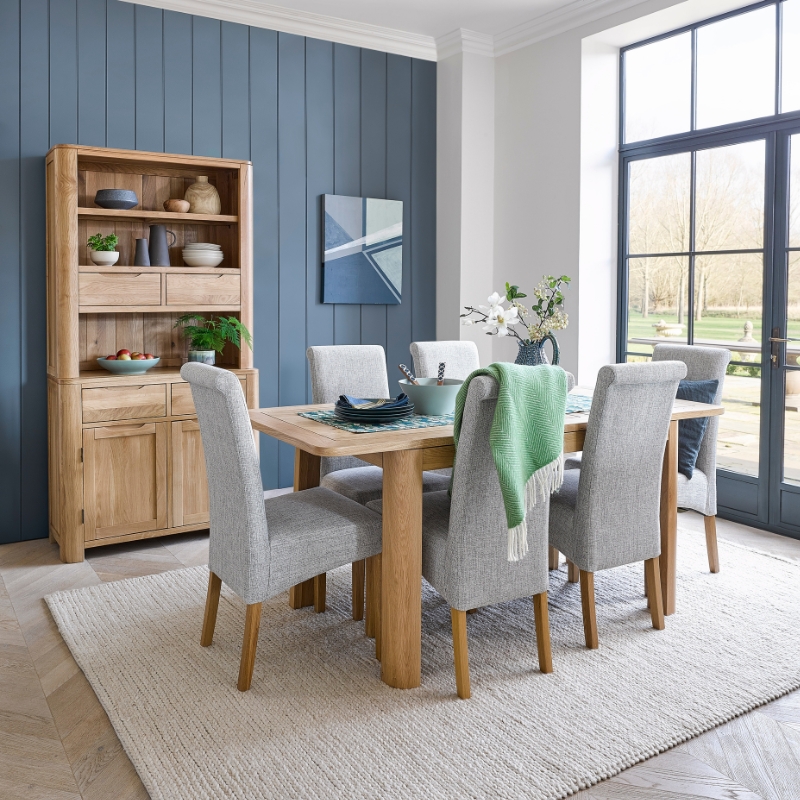
Quality you can trust
From hardwood cabinetry to durable upholstery, check out our stylish designs and discover the quality that sets our furniture apart.
Learn more »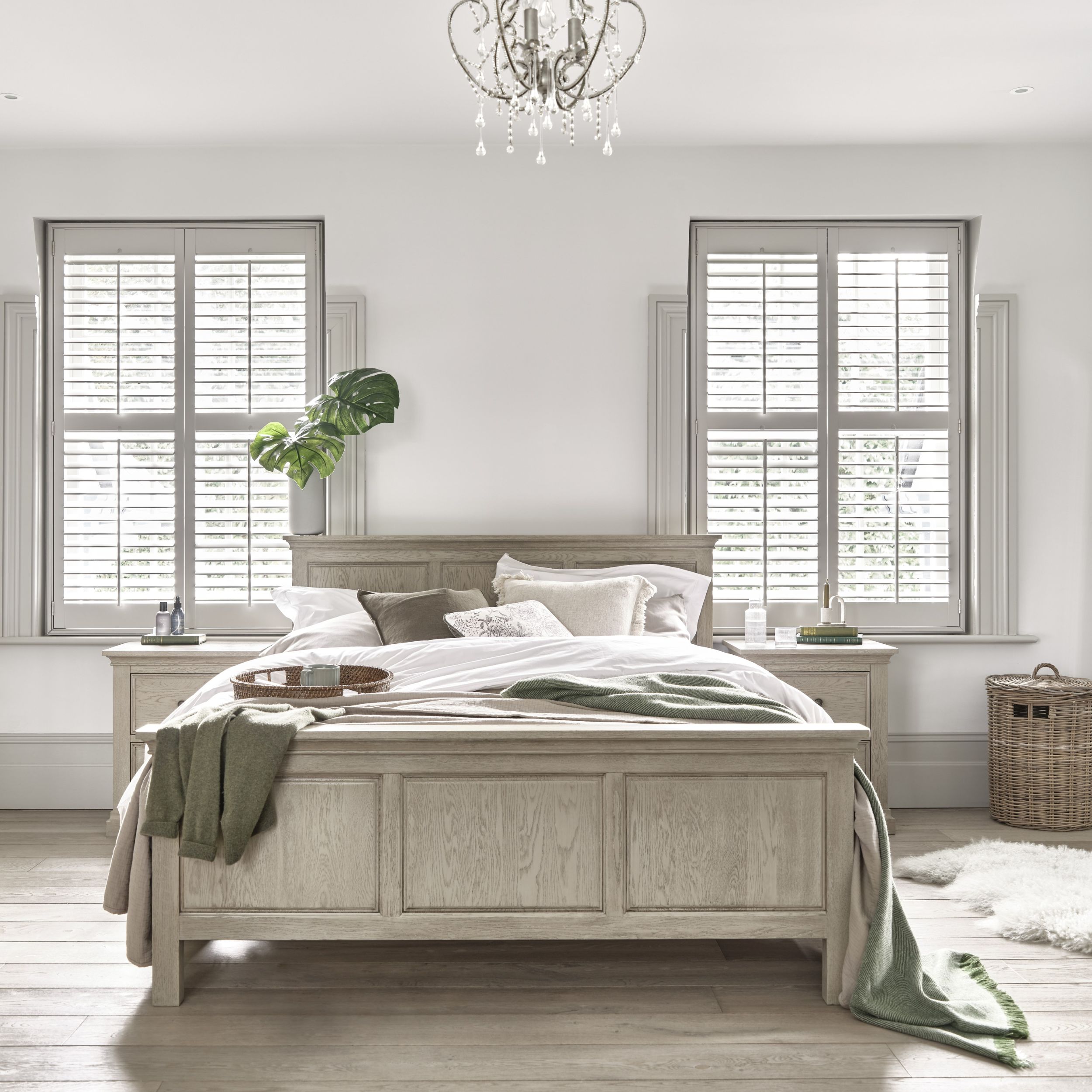
Furniture guides
Our helpful Furniture Guides provide you with extra in-depth knowledge on our products, services, and even key interior decorating tips!
Discover more »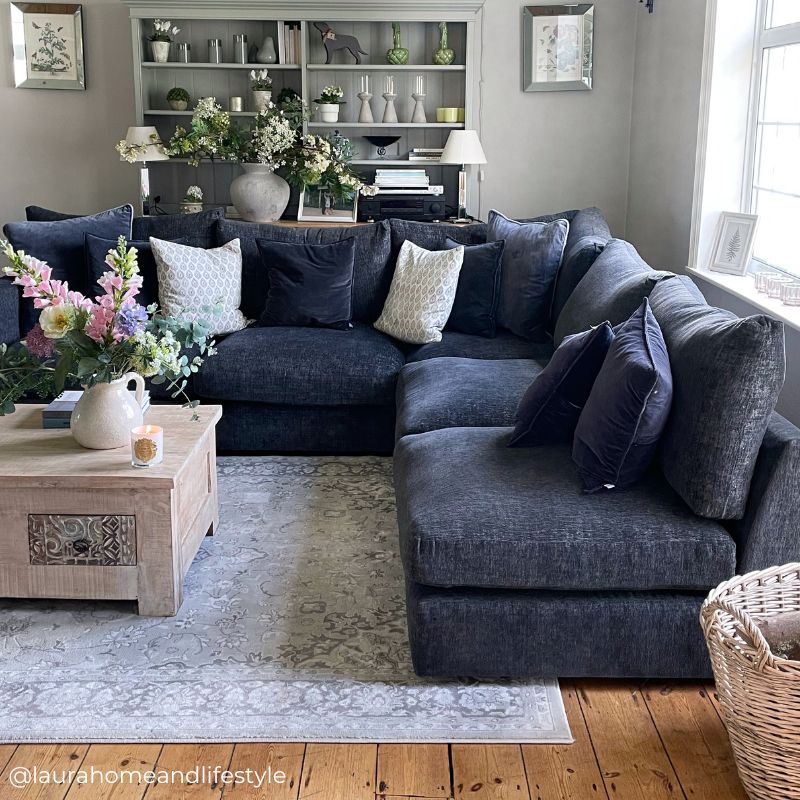
Our blog
From inspiring trend-led tips to Q&As with interiors experts, head to our blog to pick up handy style ideas for every room.
Read more »Your #OakFurnitureLand Style
X
Chat online with our team
You can request a callback from our team as an alternative
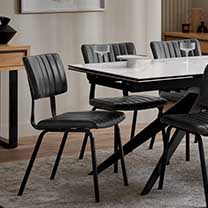
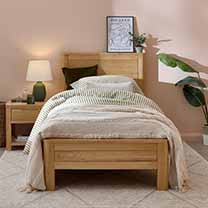
.jpg)
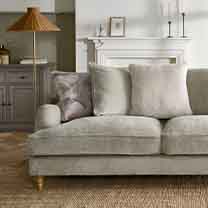

 Fabric Dining Chairs
Fabric Dining Chairs
 Oak Chairs
Oak Chairs
 Painted Dining Chairs
Painted Dining Chairs
 Benches and Stools
Benches and Stools
 Bookcases
Bookcases
 Coffee Tables
Coffee Tables
 Hallway Furniture & Storage
Hallway Furniture & Storage
 Nest of Tables
Nest of Tables
 Rugs
Rugs
 Shelving Units
Shelving Units
 Shoe Storage
Shoe Storage
 Sofas
Sofas
 Storage Cabinets
Storage Cabinets
 TV Units
TV Units
 Painted Living Room Furniture
Painted Living Room Furniture
 All Sofas
All Sofas
 2 Seater Sofas
2 Seater Sofas
 3 Seater Sofas
3 Seater Sofas
 4 Seater Sofas
4 Seater Sofas
 Corner Sofas
Corner Sofas
 Modular Sofas
Modular Sofas
 Recliner Sofas
Recliner Sofas
 Sofa Beds
Sofa Beds
 New Sofa Ranges
New Sofa Ranges
 Accent Chairs
Accent Chairs
 Armchairs
Armchairs
 Recliner Chairs
Recliner Chairs
 Loveseats
Loveseats
 Footstools
Footstools
 Storage Footstools
Storage Footstools
 All Leather Sofas
All Leather Sofas
 Leather Sofa Ranges
Leather Sofa Ranges
 Leather Armchairs
Leather Armchairs
 Leather Footstools
Leather Footstools
 Leather Recliner Chairs
Leather Recliner Chairs
 Leather Corner Sofas
Leather Corner Sofas
 Fabric Sofa Ranges
Fabric Sofa Ranges
 Fabric Armchairs
Fabric Armchairs
 Fabric Footstools
Fabric Footstools
 Fabric Recliner Chairs
Fabric Recliner Chairs
 Fabric Recliner Sofas
Fabric Recliner Sofas
 Fabric Corner Sofas
Fabric Corner Sofas
 Single Beds
Single Beds
 Double Beds
Double Beds
 King-Size Beds
King-Size Beds
 Super King-Size Beds
Super King-Size Beds
 Wooden Beds
Wooden Beds
 Storage Beds
Storage Beds
 Wingback Beds
Wingback Beds
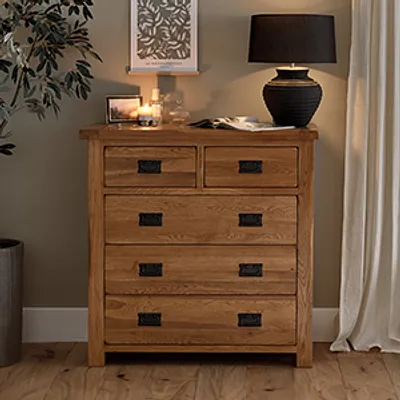
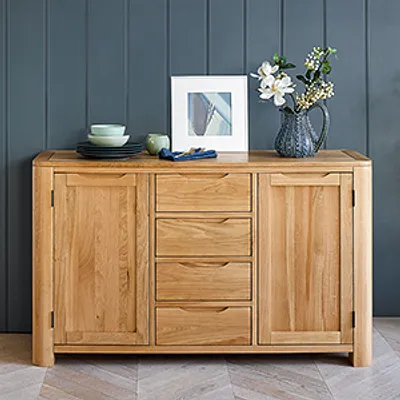
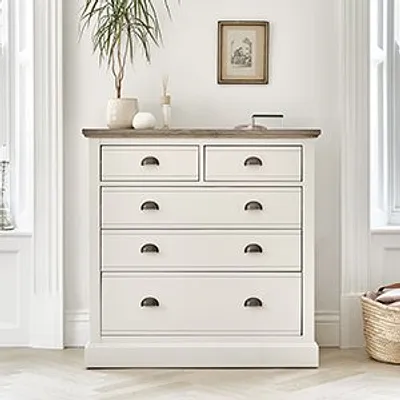
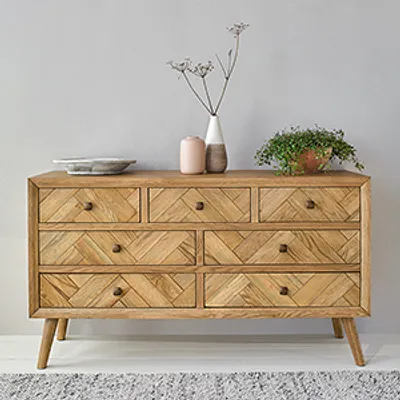
 Mirrors
Mirrors
 Lamps
Lamps
 Clocks
Clocks
 Wall Art
Wall Art
















